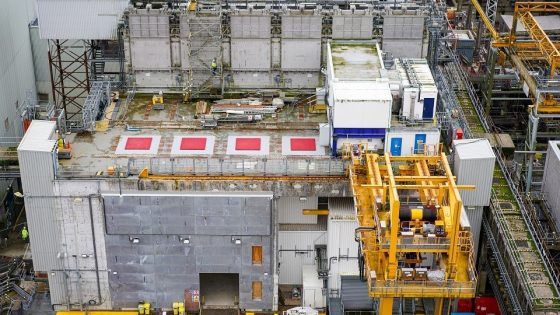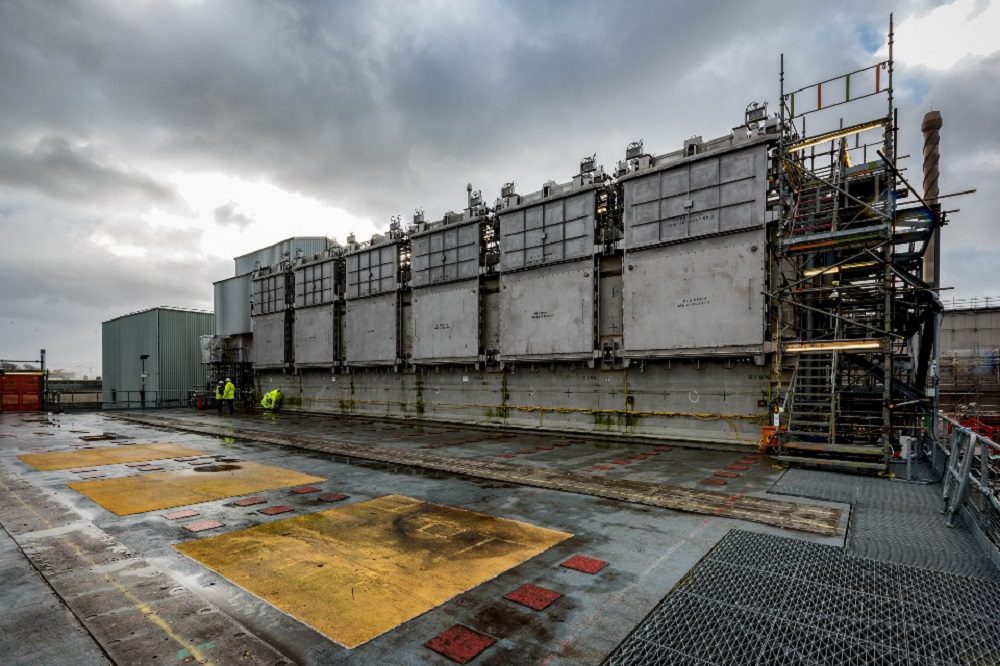Sellafield decommissioning marks milestone beginning to clear UK’s oldest nuclear waste storage building

This post was originally published on this site

The £10bn decommissioning work taking place at Sellafield has passed a milestone as engineers have begun to scoop out waste from the UK’s oldest nuclear waste storage building.
The Pile Fuel Cladding Silo (PFCS) at Sellafield nuclear facility in Cumbria is a sealed building with six compartments of radioactive material. It was built in the 1950s to store debris from the UK’s oldest nuclear reactors.
This week Sellafield engineers, using new equipment designed and installed by Bechtel Cavendish Nuclear Solution, reached a crucial stage when a remotely operated crane passed through one of six shielded access doors and started scooping out waste. The milestone is significant in the permanent, safe and secure disposal of materials as Sellafield is now retrieving waste from all four legacy ponds and silos for the very first time. The site’s £10bn decommissioning programme will last until 2039.
According to the Office for Nuclear Regulation, there are over 1,000 nuclear facilities at Sellafield, which holds the Calder Hall nuclear power station, the world’s first nuclear power station to export electricity to a public grid. It ranks as one of the most complex and hazardous nuclear sites in the world with many of the high-hazard facilities being decades old.
Bechtel Cavendish Nuclear Solutions Ltd designed, manufactured, tested, and installed the retrieval system for Sellafield Ltd as part of the U.K Nuclear Decommissioning Authority’s highest priority risk reduction clean-up program.
The remotely operated telescopic waste retrieval crane will now lift waste out of the silo and placing it into a stainless-steel waste box. The box will be sealed up before being taken out of the building in a transport package and transferred to a more modern facility on the Sellafield site for long-term safe storage.
Sellafield Ltd CEO Euan Hutton said: “The first retrievals from the PCFS are a huge step towards delivering our purpose of creating a clean and safe environment for future generations.
“This achievement means that for the first time ever Sellafield is retrieving waste from all four of our legacy ponds and silos.
“This represents the culmination of years of effort by hundreds of people throughout our organisation and contractor community. I am enormously proud of all of them.”
Bechtel project manager Mike Higgins said: “This is another leap forward in the clean-up of one of Europe’s most hazardous buildings that has posed an environmental risk for decades.
“The rapid and safe retrieval of this waste and repackaging into modern containers is a national priority.
“Getting to this position, over the last 12-years, is testament to the hard work, dedication and collaboration of the team, our joint venture partners Cavendish Nuclear, alongside our customer and all our supply chain partners.”
Cavendish Nuclear business director Leigh Wakefield said: “We are proud of the truly collaborative approach adopted between Sellafield, Bechtel and Cavendish Nuclear, which has enabled yet another milestone in the decommissioning of a 1950s nuclear waste storage facility to be delivered successfully.
“Starting retrievals is a fantastic achievement and as a team we are pleased to be supporting Sellafield to retrieve the decades-old waste, package it safely, and dispose of it permanently – reducing the hazard on the Sellafield site to create a safe and secure world, together.”
Like what you’ve read? To receive New Civil Engineer’s daily and weekly newsletters click here.





Responses